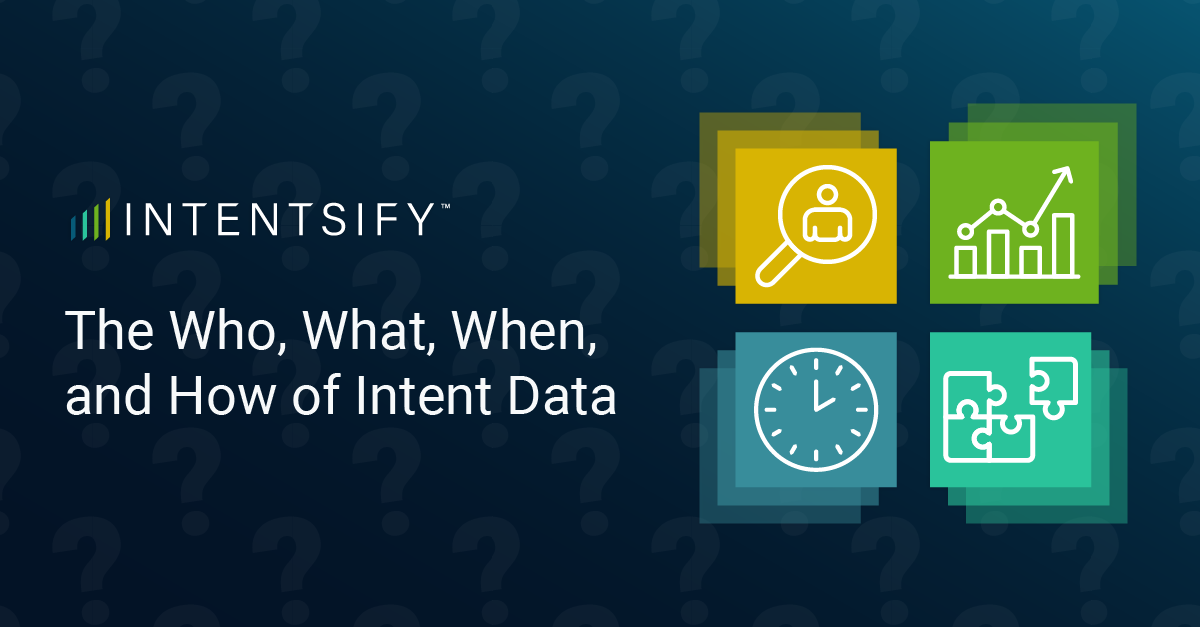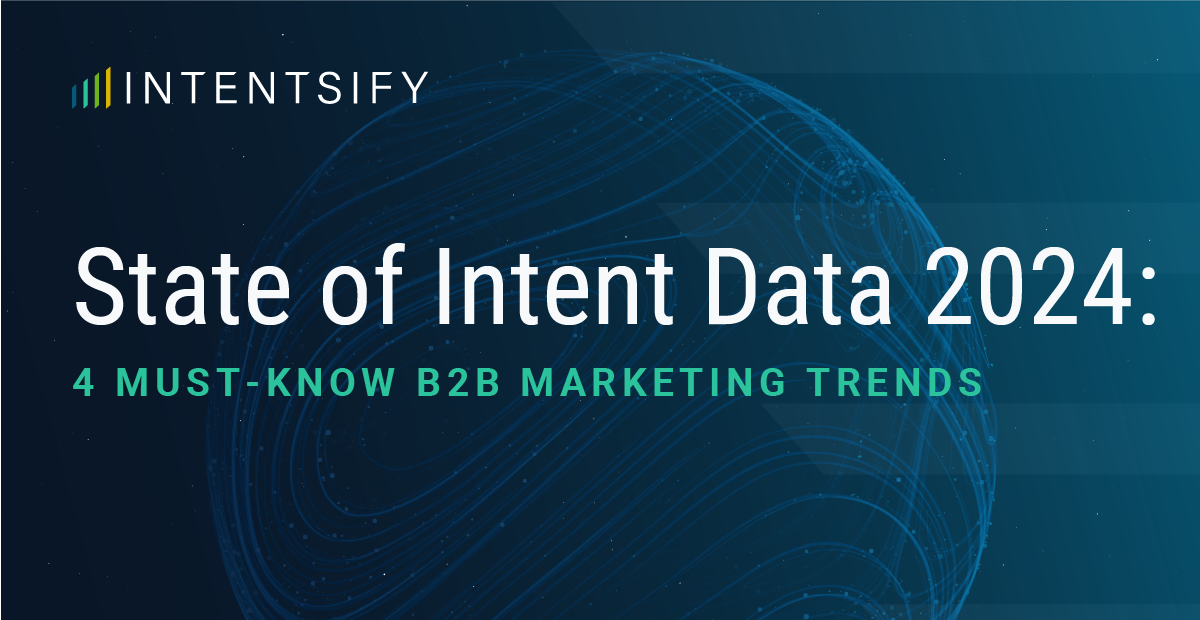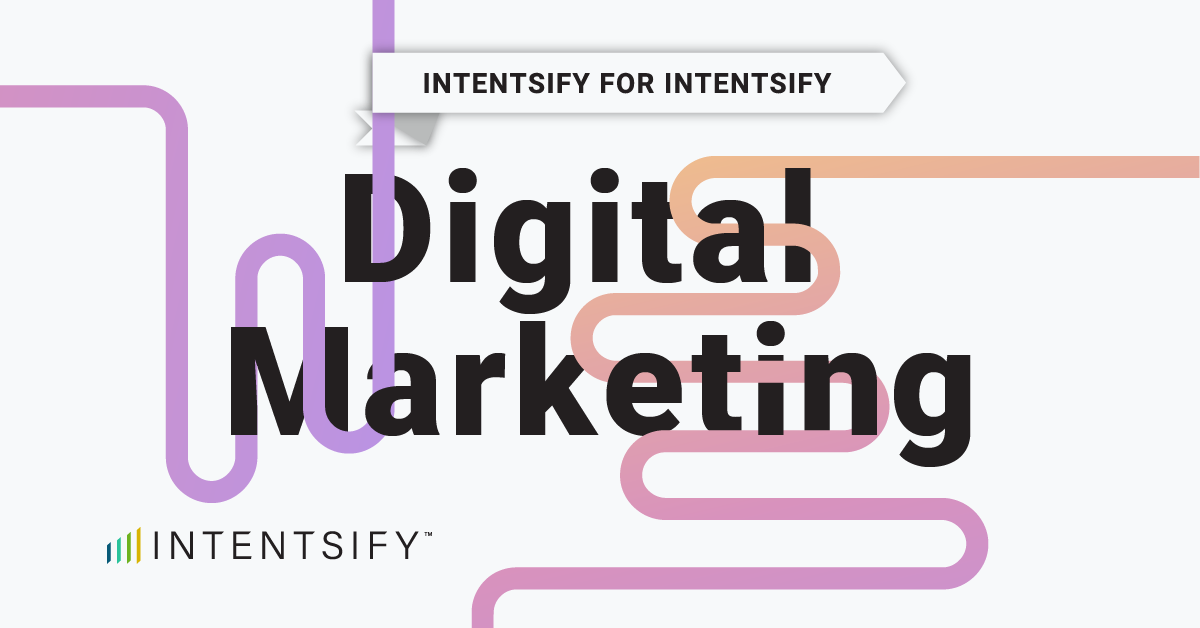Identifying, engaging, and acquiring customers to generate revenue in today’s dynamic B2B markets has become much more complex. Unlike B2C, B2B purchase cycles are long, strategic, and typically involves an entire buying group instead of just one or two people.
It can be exhausting for organizations to develop an orchestrated, efficient, and predictable customer acquisition and expansion strategy that aligns with today’s dynamic buying and selling environment. The days of just hiring more salespeople and/or unleashing media budgets to buy more giant contact lists are gone.
Instead, smart B2B teams are leveraging intent data to understand the unique buying patterns of their target audience and they are using that intelligence to develop strategies that allow them to meet buyers with the right message at the right time. And it’s not just the marketing team – functions across the go-to-market (GTM) team have identified use cases for intent data that has allowed them to increase deal velocity and decrease customer acquisition cost (CAC).
“Intent data is like ABM now—if you ask 30 different people what it is, you’ll get 35 different answers. It’s important to understand that intent data does far more than just highlighting accounts with intentions to buy. Understanding this unlocks a ton of value for B2B enterprises. Unfortunately, most organizations are missing out on these benefits.” Scott Vaughan, Chief Market Officer, GTM & Marketing Advisor, Go-to-Market Advisory
If your team is working on transitioning from the old way of list-buying and less-than-precise outreach to the new way of building a GTM strategy built on intent, here is what you need to know before you get started.
Who Uses Intent Data?
Every area of the GTM team will find value in leveraging intent data — not just the marketing team. While they are typically the flagship use case and own the budget associated with intent investments, here’s the full breakdown:
- B2B Marketers: Target strategic accounts actively researching solutions like yours with extreme precision. Gain insights into their interests and tailor campaigns for better engagement, boosting conversion rates and ROI.
- Sales Reps: Prioritize and personalize outreach based on real-time signals. Focus efforts on qualified prospects that will ultimately lead to shorter sales cycles and larger deals.
- Content Creators: Craft highly relevant content aligned with your audience’s needs and research stage. Improve content performance by addressing specific pain points and interests that will resonate with the reader.
- Customer Success Teams: Proactively identify at-risk customers showing churn signals. Offer targeted support and relevant solutions to improve retention and customer lifetime value.
What Is Intent Data?
There are more than five kinds of intent-signal sources, but these are the most common to look out for when starting your intent data journey:
- Publisher Data: This is intent data collected exclusively from a publisher’s own portfolio of web properties.
- Review Site: Review site intent data comes from online platforms that curate user generated product, service, and company reviews (e.g., G2, TrustRadius, etc.). This data is strong regarding surfacing late-stage intent signals.
- Co-Op Data: Co-op data is gathered from a collective of online properties owned by publishers, research firms, tech vendors, agencies, event firms, and more.
-
Ad Exchanges: Ad exchanges generate intent data across biddable online advertising inventory, providing unmatched intent signal coverage and volume.
-
Social/Public Data: Providers derive this intent data by combing the public web (e.g., social media websites) to show which target accounts engage with competitors, specific keywords, and events relevant to your offerings.
Where Is Intent Data Derived From?
Intent data is complex, there is no denying it. But breaking down each of the sources and where their data comes from is the first step in understanding your intent data and how to appropriately action on it.
- 1st Party Intent Data: Businesses’ online research activities indicative of buying intent acquired directly through your owned media (website, landing pages, social profiles, etc.)
- 2nd Party Intent Data: Intent data sourced by a third-party’s owned media and database systems (i.e. it’s a third-party’s first-party intent).
- 3rd Party Intent Data: Online research activity sourced by a third-party vendor.

When Do You Use Intent Data?
If we ascribe to a broader, yet more accurate definition of intent data (i.e., data regarding businesses’ online research behaviors), we open the door to far more use cases. For example, beyond simply identifying which accounts to target for marketing and sales efforts, strategy-focused teams can use the information to better:
- Target and Engage at the right time: Intent data reveals individual and account-level “buying signals,” pinpointing your prospects’ exact positions in their buyer’s journey.
- Personalize Messaging & Upsell Potential: Deep insights into prospect and customer concerns, priorities, and content consumption habits are unlocked through intent data.
- Market Dynamics & Competitive Agility: Stay ahead of the curve by identifying market shifts, competitor moves, and potential acquisition targets using intent data. Proactively adapt strategies, identify new opportunities, and stay ahead of the competition.
How Can You Start Using Intent Data?
While B2B teams are rightly investing heavily across diverse intent data sources, the No.1 challenge marketers face with their intent data investments is “Making intent data actionable.”
Intent data reveals prospects actively researching solutions, but it’s just the starting point. Operationalizing intent data is the key to success, but it’s also one of the hardest parts. This problem is the driving force behind Intentsify’s Intent Activation software and solutions. Being able to quickly and automatically deploy lead generation campaigns based on real-time intent signals has been a game changer for Intentsify customers.
Although there are more than ten use cases for intent data across the GTM teams, we find that those that are just getting started are most comfortable starting with target account list (TAL analysis) and lead generation programs like content syndication and display advertising. Then, once those programs are performing, many users start looking at the intent signals deeper to understand where there are gaps in their content topics or where their messaging is falling flat.
Every team starts somewhere, and if you’re already investing in a form of intent data, you’re ahead of the curve. If you want to learn how to get the most out of that investment, our team can show you.






